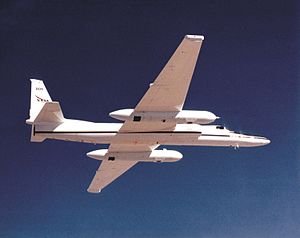



| Specifications | ||||
| Primary Function | high-altitude reconnaissance | |||
| Contractor | Lockheed Aircraft Corp. | |||
| VARIANT | U-2A | U-2R | TR-1 | U-2S |
| Wing span | 80 feet | 103 feet | ||
| Length | 49.5 feet | 63 feet | ||
| Empty Weight | 11,700 lbs | 14,900 lbs [td=2,1]16,000 lbs | ||
| Maximum Takeoff Weight | 16,000 lb | 41,000 lb (18,598 kg) | ||
| Maximum Speed | 528 mph | 510 mph | 495 mph | ~500 mph |
| Engine | P&W J57-P-37A | P&W J75-P-13B | GE F-118-101 | |
| Engine Thrust | 11,200 lbst [td=2,1]17,000 lbst | 19,000 lbst | ||
| Ceiling | 85,000 feet | 80,000 feet [td=2,1]90,000 feet | ||
| Range | 2,200 miles | 3,500 miles | 4,000 miles | 4,600 miles |
| Endurance on internal fuel | 6.5 hours | 7.5 hours | 12 hours | +10 hours |
| Date Deployed | Aug 1955 | 1967 | Sep 1981 | Oct 1994 |
| Crew | One (two in trainer models) | |||
| Cost | Classified | $400 million | ||
| Production and Inventory | Production: 30 U-2A all converted to later models and retired by April 1989 | Production: 16 U-2B 15 U-2R all converted to later models | Production: 25 TR-1A 2 TR-1B 2 ER-1 | Inventory 32 Active force + 4 trainers 0 Reserve 0 ANG |
| Year | Class A Mishaps | Total Annual Flight Hours | U-2 Flight History |
| 1963 | 1 | During the early years of the U-2 program, the aircraft had mishaps. All of these mishaps were investigated, but the reports were limited in number. None were released to the general Air Force community nor were they put into the Safety Center's data base. Also, the flight hours accumulated per year were a closely guarded secret, so the ability to get an accurate mishap rate was very difficult. However, since the U-2 program has been largely declassified, this information is now available. The information provided in this chart is accurate, but the early years should be viewed with a wary eye. This chart represents all of the mishaps the Air Force Safety Center is aware of and all of the flying time flown by the U-2 since 1963. For the years FY63 to FY69, there is no accurate information on flying hours for the U-2 aircraft. The U-2 aircraft was designed and fielded during the height of the Cold War, and this aircraft was one of the most secret US weapon systems. Also, the U-2 was designed in the 1950s ago when there wasn't any computer-aided design, system safety was just a dream, and the technology was on the outer limits of the aircraft industry. However, the U-2 has performed outstandingly against all these odds and has been called upon when the nation needed valuable information on various hot spots in the world. So the mishap rate may be higher compared to newer aircraft (F-15 and F-16) or against aircraft of the same era (B-52 or C-130). But these aircraft have gone through many, many changes during the years of their operation. In the early 1990s the mishap rates were relatively high. However, there was no one main reason for the increase in the mishap rate. This fact made the management of the U-2 program difficult at best. The aircraft is being upgraded with a new engine and other components, but as the Air Force Chief of Staff has indicated, this weapon system is in the sunset of its career. | |
| 1964 | |||
| 1965 | |||
| 1966 | 1 | ||
| 1967 | 1 | ||
| 1968 | 1 | ||
| 1969 | |||
| 1970 | 4,413 | ||
| 1971 | 1 | 4,241 | |
| 1972 | 1 | 7,732 | |
| 1973 | 10,718 | ||
| 1974 | 11,425 | ||
| 1975 | 2 | 10,791 | |
| 1976 | 8,717 | ||
| 1977 | 1 | 9,395 | |
| 1978 | 8,934 | ||
| 1979 | 10,126 | ||
| 1980 | 3 | 10,800 | |
| 1981 | 10,211 | ||
| 1982 | 10,131 | ||
| 1983 | 12,555 | ||
| 1984 | 3 | 13,257 | |
| 1985 | 11,788 | ||
| 1986 | 13,954 | ||
| 1987 | 16,785 | ||
| 1988 | 16,730 | ||
| 1989 | 17,620 | ||
| 1990 | 1 | 18,001 | |
| 1991 | 19,820 | ||
| 1992 | 1 | 16,597 | |
| 1993 | 1 | 18,085 | |
| 1994 | 1 | 15,643 | |
| 1995 | 1 | 17,726 | |
| 1996 | 2 | 13,762 | |
| NOTES: Calender year through 1987, Fiscal Year thereafter No Flight hours data available prior to 1970 SOURCE: U-2 Mishap History and data table Flying Safety Magazine December 1996 | |||







| 歡迎光臨 鐵之狂傲 (https://gamez.com.tw/) |